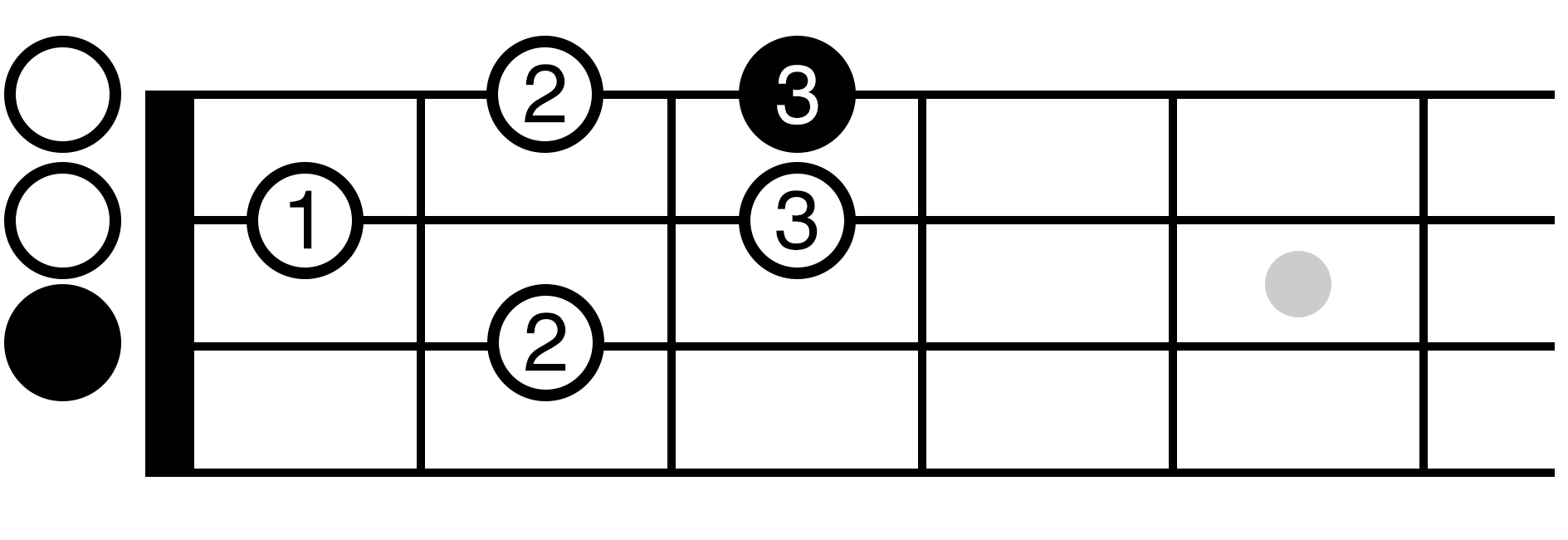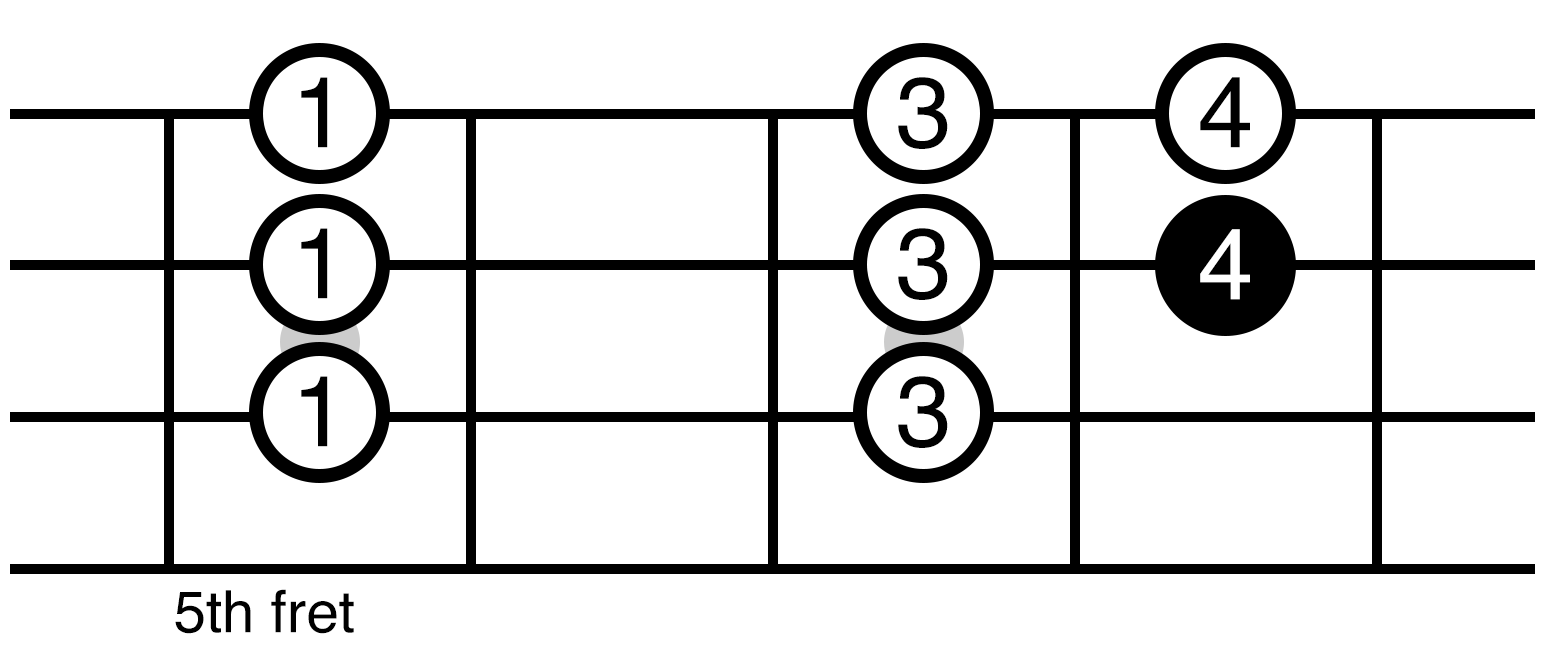Note: This is a guest post by Eduardo of MusicianAuthority.com.
What happens when you combine one of the most heartwarming instruments in the world and one of the most influential bands ever?
Today, we are talking about playing songs by The Beatles on the ukulele!
I’ve put together a list of 10 Beatles easy ukulele songs for beginners and provided a few tips for learning and playing them.
Let me tell you, putting this kind of list is no easy task! There are so many great hits by The Beatles to choose from but today we’ll list 10 that are quite unforgettable.
Be sure to have your ukulele ready while going through this article. If you don’t have a ukulele, you can take a look at some recommended options here![]() .
.
I’ve also picked out some wonderful Beatles ukulele covers from YouTube to go along with the article. I think all of them are worth listening to, both as a way to learn the songs more easily and to get inspired to play more ukulele!
Please enjoy this article, and if you end up recording your own Beatles ukulele cover (or if you have any questions!), I’d love to listen… and by the way, for help with the chords you can open up this ukulele chords guide for easy reference. It will come in handy as you go through learning new songs.
Beatles Easy Ukulele Songs for Beginners
1. Hey Jude
Released in 1968 and credited to both McCartney and Lennon, “Hey Jude” is one of the top 10 Greatest of All Time according to Billboard.
There are a few basic ukulele chords in this song, but it’s a rather beginner friendly tune because you can get started by just playing down strums very easily as you get more comfortable with the song. The thing that makes it a great song to learn and practice is the catchy and easy to remember lyrics.
It’s an enjoyable tune you can get started on learning to sing and play ukulele at the same time. This is a great song for developing the ability to sing a little more independently from your strumming.
The best strategy is to take it slow. If you’re having a hard time singing along, practice the strumming and singing separately! It’s perfectly alright to practice with a recording to get the timing of the melody in your head.
Then, you can practice singing while tapping the rhythm on your thigh or a desk before adding the strumming back in. Get comfortable with it by taking it a step at a time. These tips will keep you on the right track, just stay focused and have lots of fun.
Here’s a great cover of “Hey Jude” with such a crisp ukulele sound.
2. In Spite of All the Danger
“In Spite of All the Danger” is another great place to start playing The Beatles on the uke– after all, it’s where The Beatles started playing The Beatles!
Paul McCartney and George Harrison, part of the group then called “The Quarrymen”, wrote this song together in 1958.
When you’re first starting on the uke, a lot of your strums tend to be “Down” strums. Adding the “up” strum at a softer volume take some time to get used to – but because of the strong “Down” presence in this song, you’ll get a feel for how to accent your Down strums and play a little more gently on your Up strums.
Check out this awesome father-son uke-guitar duo playing “In Spite of All the Danger” for some inspiration! But before playing along, don’t forget to tune your ukulele!
3. Act Naturally
Alright, this isn’t technically a Beatles song (it was written by Buck Owens in 1963). But the Beatles made it famous in 1965 on their album Help!, showcasing the vocal talent of Ringo Starr.
This song feels like it was written for the uke. It’s got a relaxed, folky feel. It’s also a great way to get your inner percussionist involved in your uke playing.
The Beatles had their drummer sing this song for a reason: it’s not as easy as it seems to keep the vocals in time!
Most people who sing this song tend to slow themselves down. You can avoid this by practicing slowly with a metronome, and also by recording yourself. That way, you can play back the recording and hear whether you’re singing the words in rhythm. You can increase the tempo on the metronome as you get more comfortable.
I love the way this gentleman acts naturally in his uke cover:
4. Let It Be
“Let It Be” was The Beatles’ last single before Paul McCartney left the band. Today, this song has become part of the Great American Songbook, right alongside other 70s tracks like Mrs. Robinson.
This song uses one of the most common groups of chords in contemporary music, so it’s a great staple. Its popularity also makes it ideal for practicing expressive playing – once you’ve learned the chords, be bold! Don’t be afraid to experiment – try different speeds, rhythms, or accents to give “Let It Be” your own creative twist.
The ukulele player in this video takes the song at her own pace, playing it at a key tailored to her voice, and includes a couple subtle flourishes that make her version unique.
5. Yellow Submarine
If you have three people in a room, you’ve got four interpretations of the 1966 classic “Yellow Submarine.” But when he was asked about the song, Paul McCartney maintained that there wasn’t a special secret meaning to it.
“It’s a happy place… that’s all,” he said. “We were just trying to write a children’s song.”
Without sharp chord changes, this song doesn’t come together so well. So, it’s perfect for teaching yourself how to pick up speed and learning how to change ukulele chords quickly.
Don’t start at the actual speed of the song (about 110 BPM). Instead, start at a much slower speed, say, 85 BPM. When you have mastered it at that speed, gradually increase your speed by five beats per minute each time.
It’s kind of like lifting weights: doing an exercise properly with less weight is a thousand times better than doing it improperly with too much. If you start at a manageable speed, you’ll get to your goal speed much faster, and you’re less likely to strain your muscles or get frustrated and give up.
If you’re curious about this method or how your muscle memory works, you can learn more about how to effectively build it on this other article I wrote.
Here’s another top-notch ukulele cover from someone who seems like he’s having a lot of fun. Notice the style. This is called fingerpicking. If you want to take a course on learning how to fingerpick the right way and get really good at it, you should take a look at Fingerpicking Tricks.
6. Eleanor Rigby
“Eleanor Rigby,” also from the album Yellow Submarine, marked a subtle turning point for The Beatles as they moved from being a live pop music group to a more studio-oriented group. Pete Townsend from The Who also cited “Eleanor Rigby” as an inspiration.
Eleanor Rigby is an unusual pop song, particularly because it uses a lot of syncopation. Syncopation is just a fancy word that means “rhythms that fall in surprising places.” As you learn the song, you’ll notice that the “strong beats” in the vocal melody don’t always fall right in step with the strong beats in the strumming pattern. That’s one of the things that gives this song such a memorable sound and drives the melody forward.
If you’re having trouble lining your strumming up to your singing, you might not be ready to bring the singing in yet. You might need more time building muscle memory so that your strumming feels natural! When I learned this song, I practiced the strumming and chord changes on their own until they felt comfortable; then, I added the singing back in.
For inspiration, check out this uke version – its a simple version with a soft voice!
7. Obla-di, Obla-da
“Obla-di, Obla-da” is a lighthearted song with a great message. It also highlights the Beatles’ reggae influences, which makes it great for bringing an “island feel” into your playing – very appropriate for the ukulele.
“Chunking” (a.k.a. muting your strings to create a percussive sound, rather than strumming) really adds to the strumming pattern in this song. Here’s my two-step process for making the “chunk” sound:
STEP ONE: Before your strum, rest the base of your palm on the strings near the bridge. While you usually strum closer to the neck, for a muted strum, you want to strum lower on the uke, because otherwise, all the notes could become sharp!
STEP TWO: Strum with your finger(s) curling inward toward the strings, making sure all the strings are evenly muted.
For inspiration, I love the sound of this carefree cover from YouTube:
8. Octopus’s Garden
Ringo Starr said he got the idea for “Octopus’s Garden” from his first experience eating squid, which happened in 1968 on a boat that belonged to comedian Peter Sellers. According to Ringo, he had ordered fish and chips, but he was served squid instead – and, in 1969, we got “Octopus’s Garden.” I included this song in my article on easy ukulele songs and included an audio covering the suggested strumming pattern.
This song can help you get the hang of faster chord changes: the speed of the strumming doesn’t leave much time for dawdling between chords!
As you practice, try to think of the next chord shape before the time comes to switch the chords – so that while you’re playing a phrase, you’re already mentally preparing to move your hand to the new position.
This does take practice, and you might want to practice the strumming by itself before adding the vocal melody. One thing that can help, while you’re practicing, is to actually say the name of the chord on the beat you put your fingers down. This way, your brain is reinforcing the chord change verbally as well as kinesthetically.
I was transported to a summer campfire by this woman’s cover of “Octopus’s Garden”:
9. You’ve Got to Hide Your Love Away
“You’ve Got to Hide Your Love Away” is The Beatles’ tribute to Bob Dylan. It’s also a good way to learn to play something that really sounds like folk music.
Most of the time, if you tap your foot along to a song, you’ll feel yourself tapping in groups of 2 or 4, with the emphasis on the first tap. But folk music is often felt in groups of 3 – that’s one of the things that makes “You’ve Got to Hide Your Love Away” feel so folky.
Don’t believe me? Try tapping quickly along with the strums of the song. If you pay attention, you’ll find yourself tapping in groups of 3, with the emphasis on the first tap of each group.
As you practice and listen to this song, keep that feel in the back of your mind. It’ll help you bring out the musicality of the songwriting.
10. We Can Work it Out
“We Can Work It Out” is remarkable because it was a true Lennon-McCartney collaboration. Even the lyrics seem to reflect that!
For many beginners, this song can be the perfect cumulative project, putting together several of the concepts that the other songs on this list highlight individually.
If you can play this, pat yourself on the back and move on to a different article – because you’re now an intermediate player, not a beginner… and you can create your own Beatles ukulele cover!
For now, I’ll leave you with this nice cover. This style in the video is fingerpicking, like the video on #5. If you want to get started with the absolute basics for fingerpicking, take a look at 3 Easy One-String Ukulele Songs Fingerpicked written by Brett.
Eduardo is the founder of MusicianAuthority.com, where you can find resources such as a ukulele chord video library to learn the chords and ukulele tabs to follow along your favorite songs.
























 .
.




 One of the biggest challenges beginner ukulele players face is sore fingertips and hands. You can’t see in the picture but the tips of my fingers have developed tough calluses over the years with consistent playing that make it so chords are much easier to play. In the early stages, it’s important to keep practice consistent to toughen the fingers up, but remember to give your fingers rest between practice sessions to heal. It’s all apart of the process. With a bit of time and practice, you’ll find that chords which once seemed impossible are much easier to play!
One of the biggest challenges beginner ukulele players face is sore fingertips and hands. You can’t see in the picture but the tips of my fingers have developed tough calluses over the years with consistent playing that make it so chords are much easier to play. In the early stages, it’s important to keep practice consistent to toughen the fingers up, but remember to give your fingers rest between practice sessions to heal. It’s all apart of the process. With a bit of time and practice, you’ll find that chords which once seemed impossible are much easier to play!































